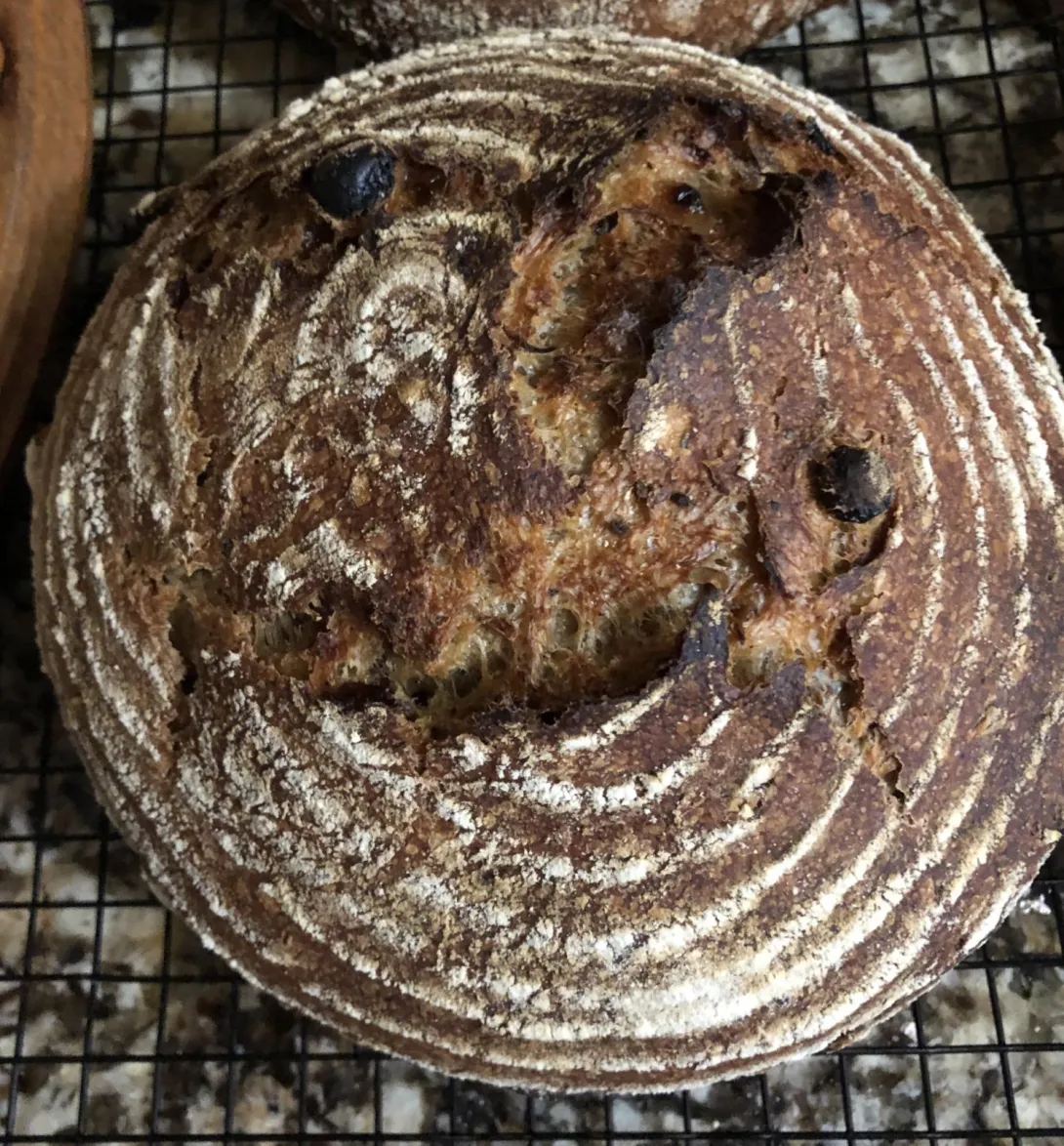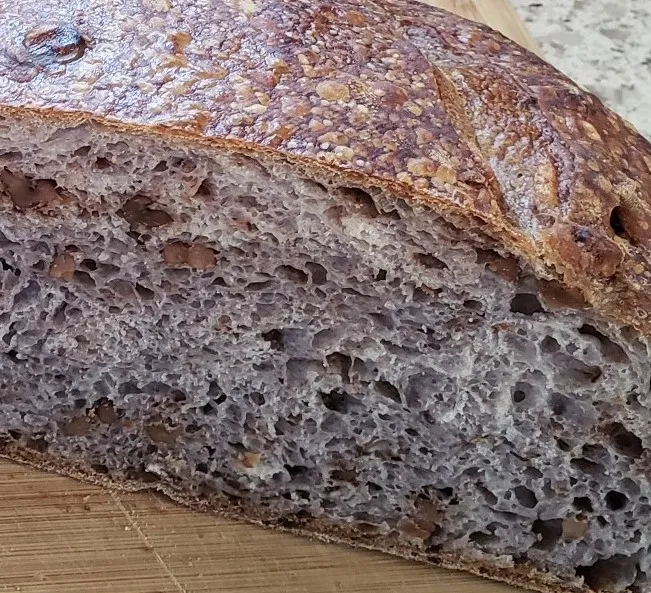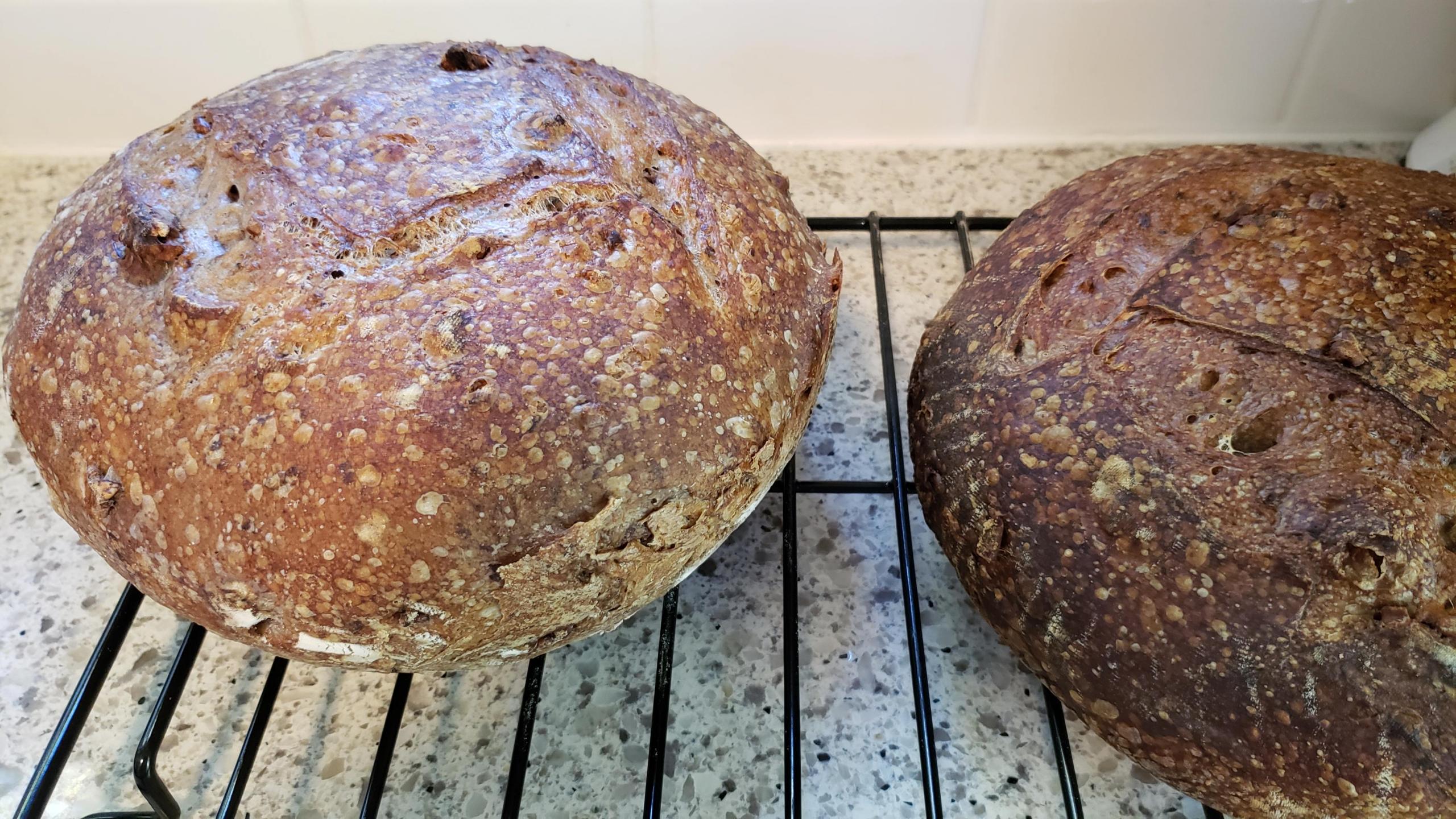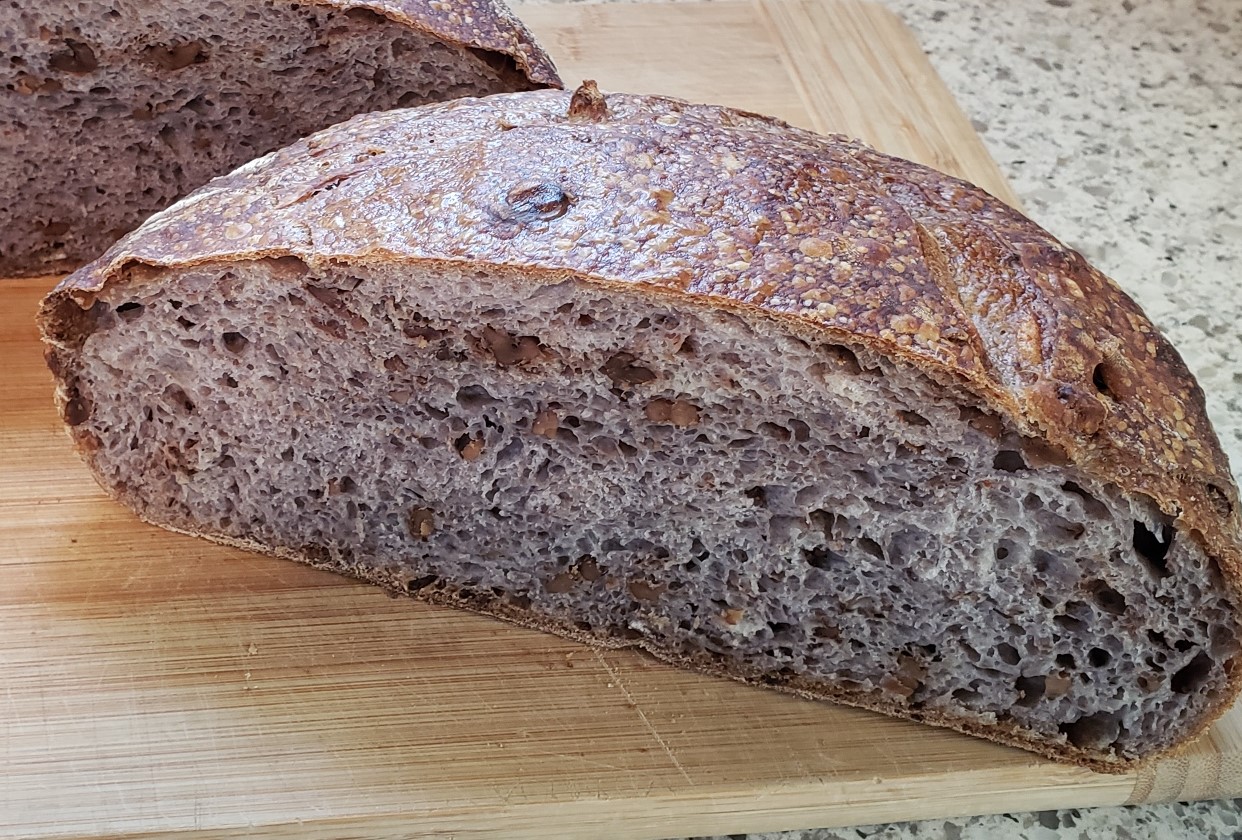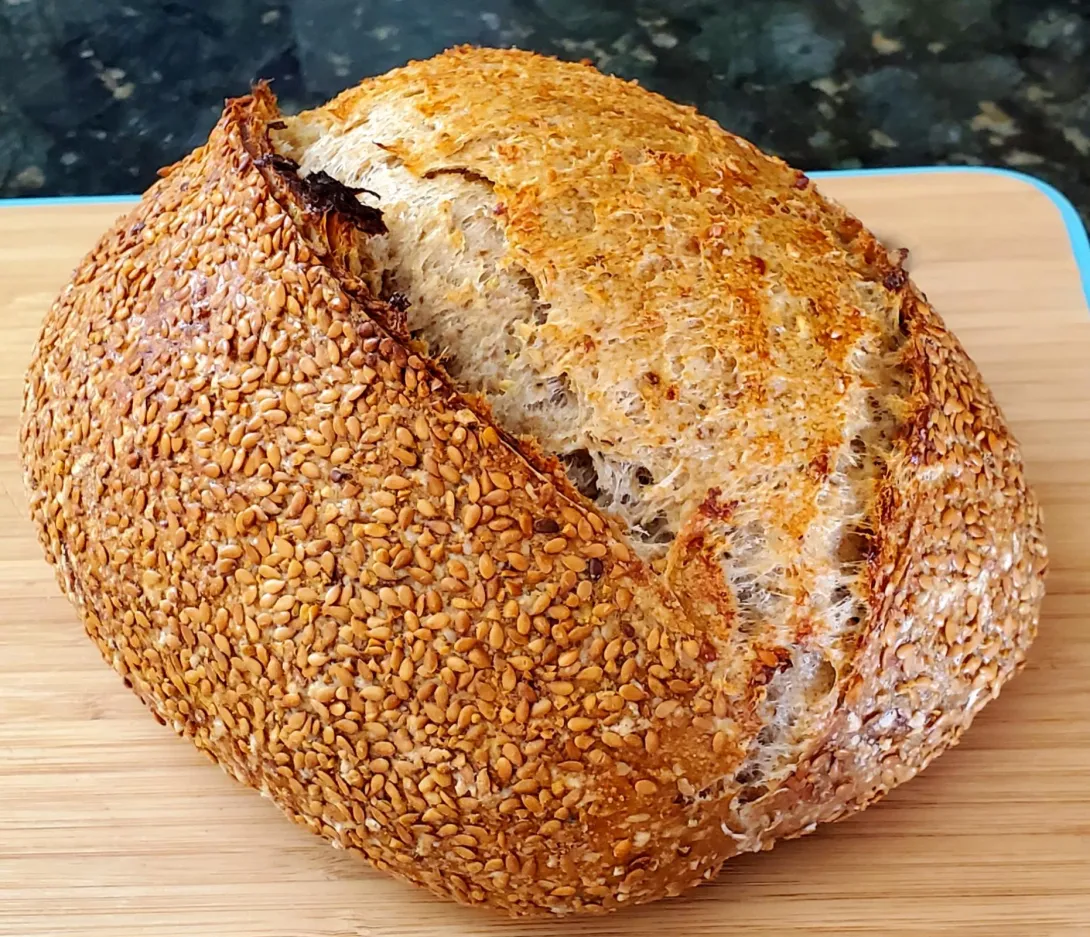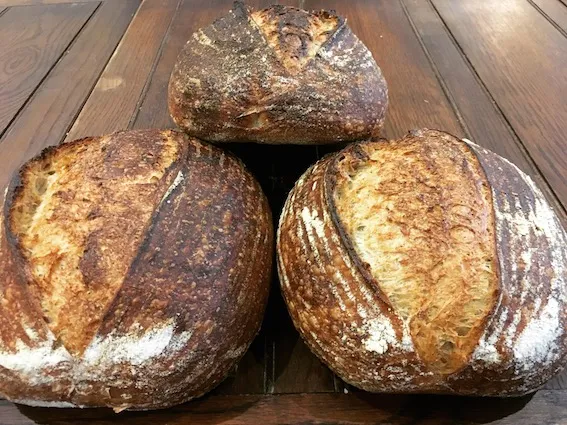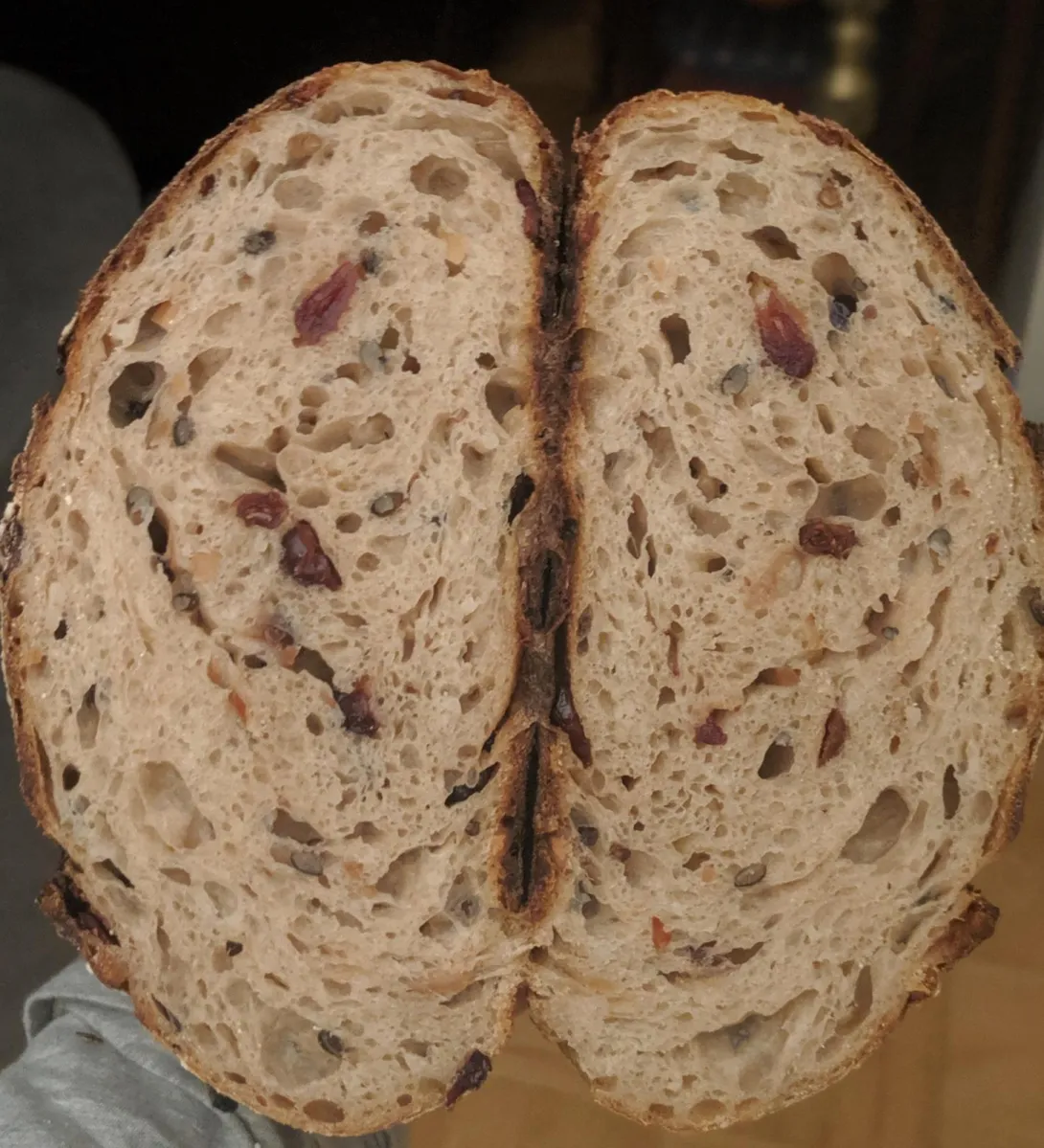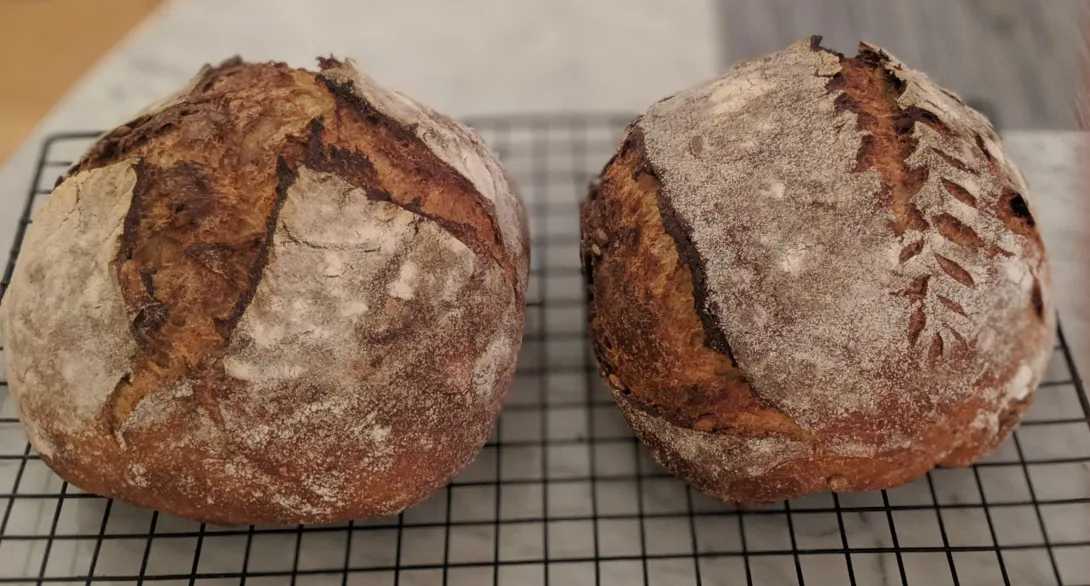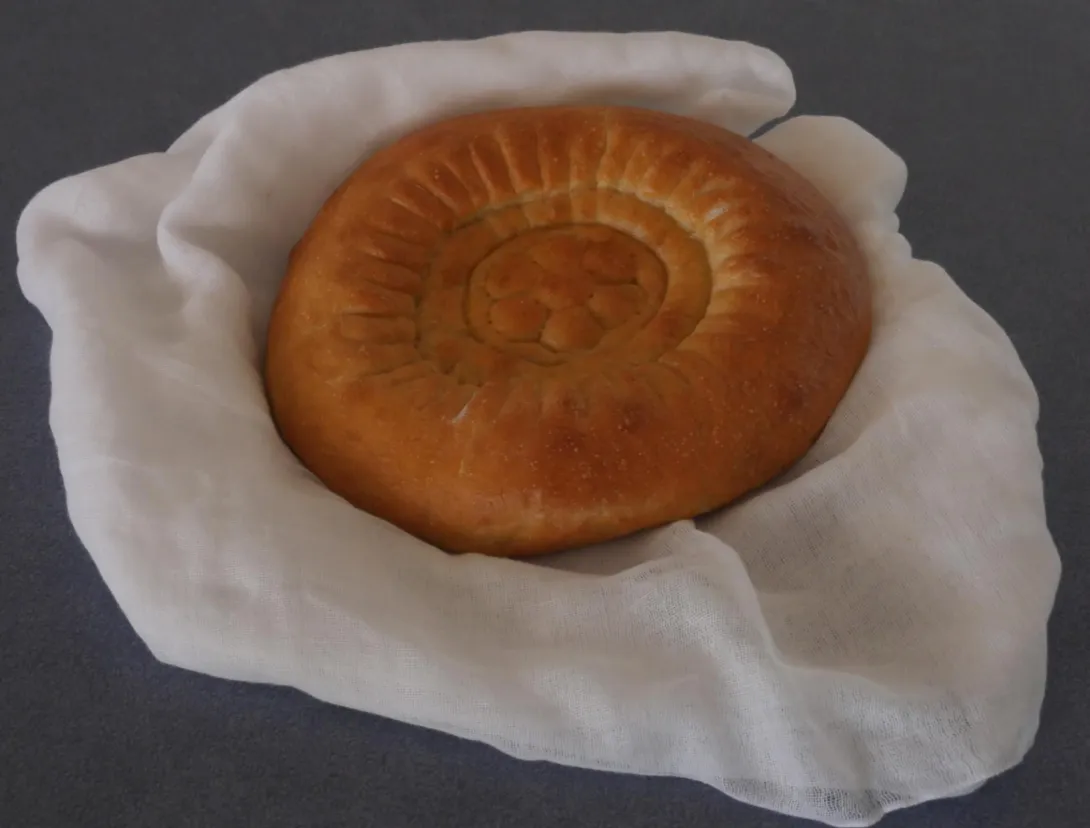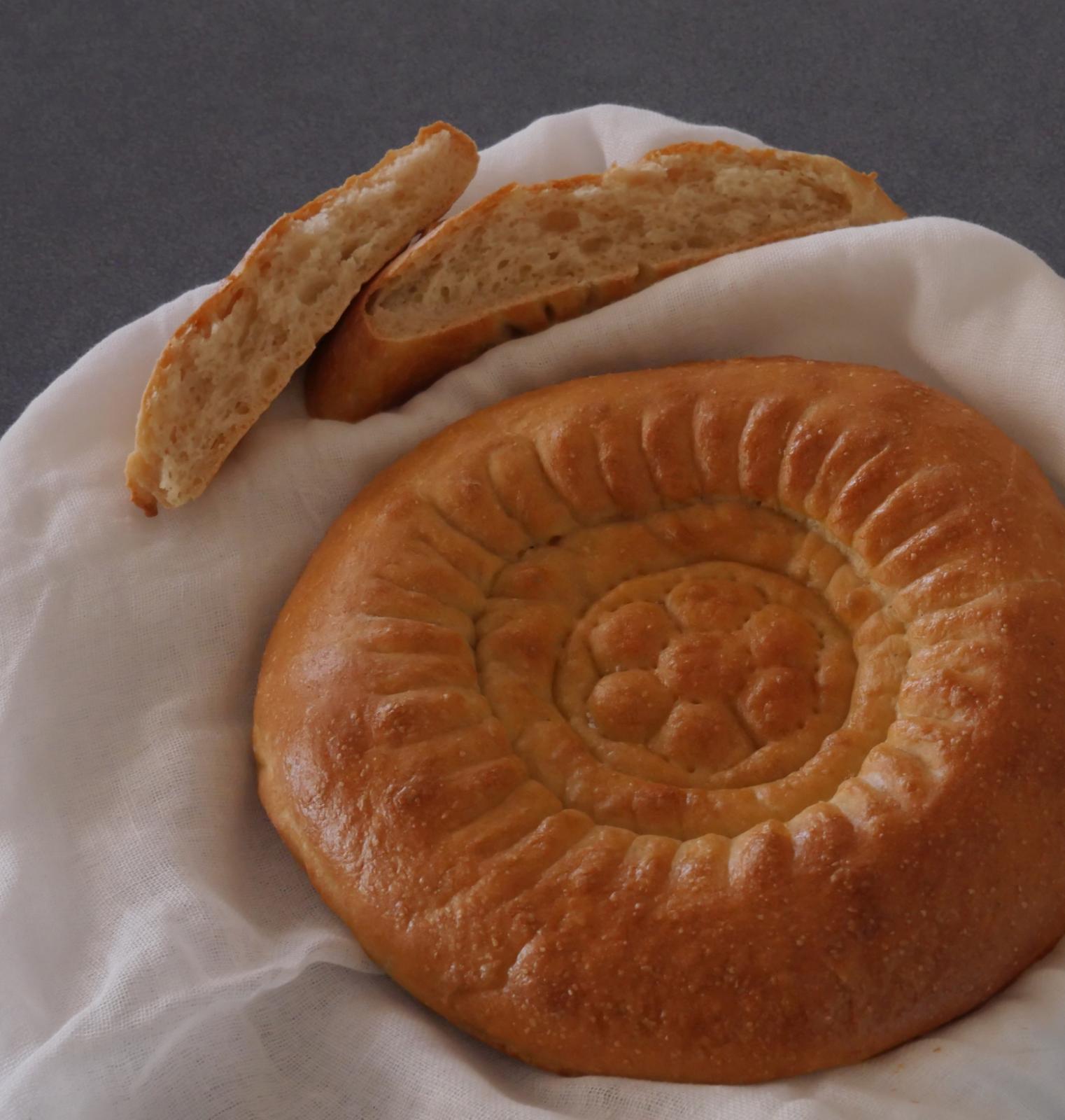Whole Wheat Cranberry Nut Sourdough w/ YW
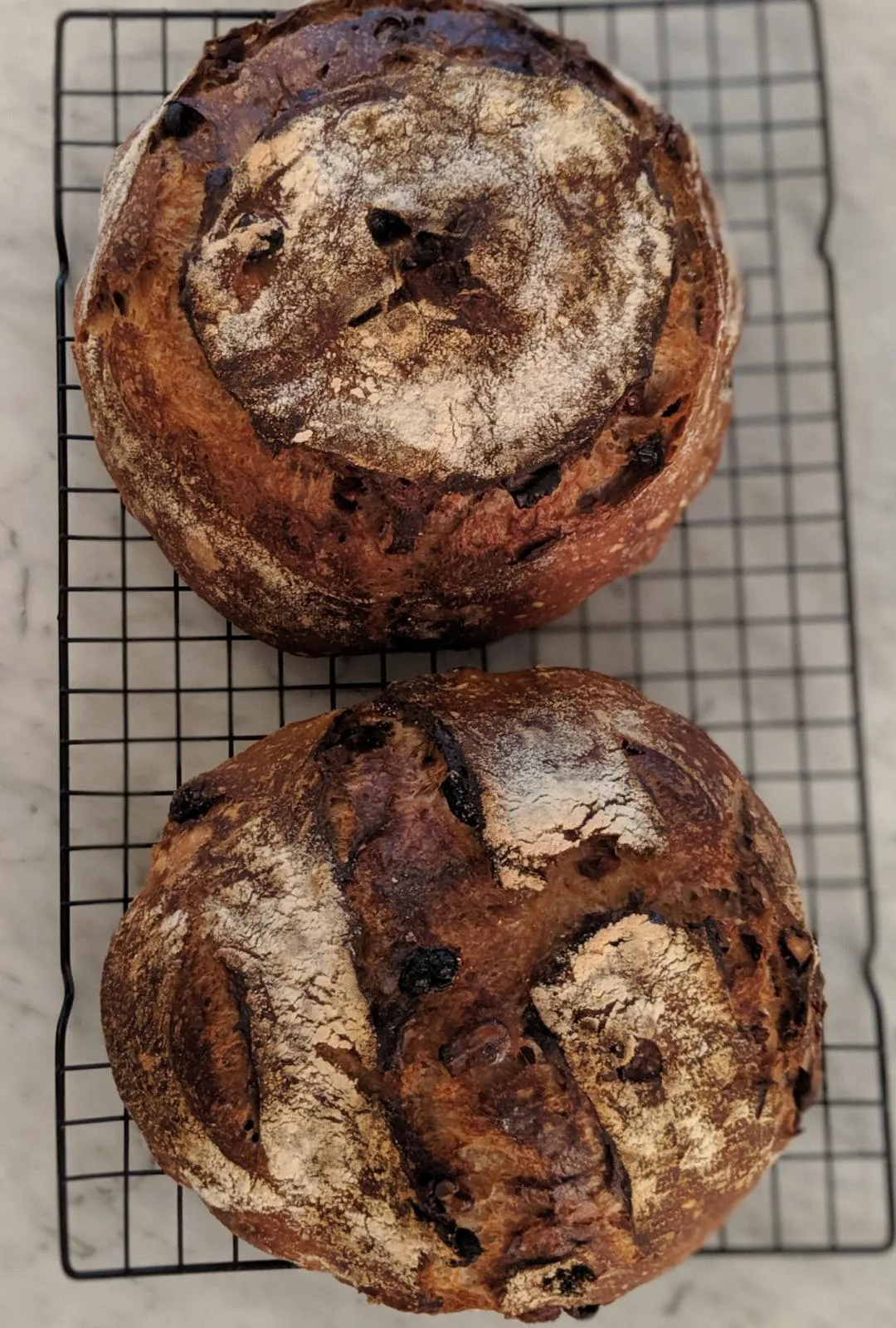
I was thrilled with the wild rice cranberry & nut bread I made last weekend so I decided to make another fruit/nut loaf. I didn't add rice this time, but I upped the percentages of whole grain. I briefly thought about adding cooked spelt, but then I forgot.
- Log in or register to post comments
- 4 comments
- View post
- ifs201's Blog
